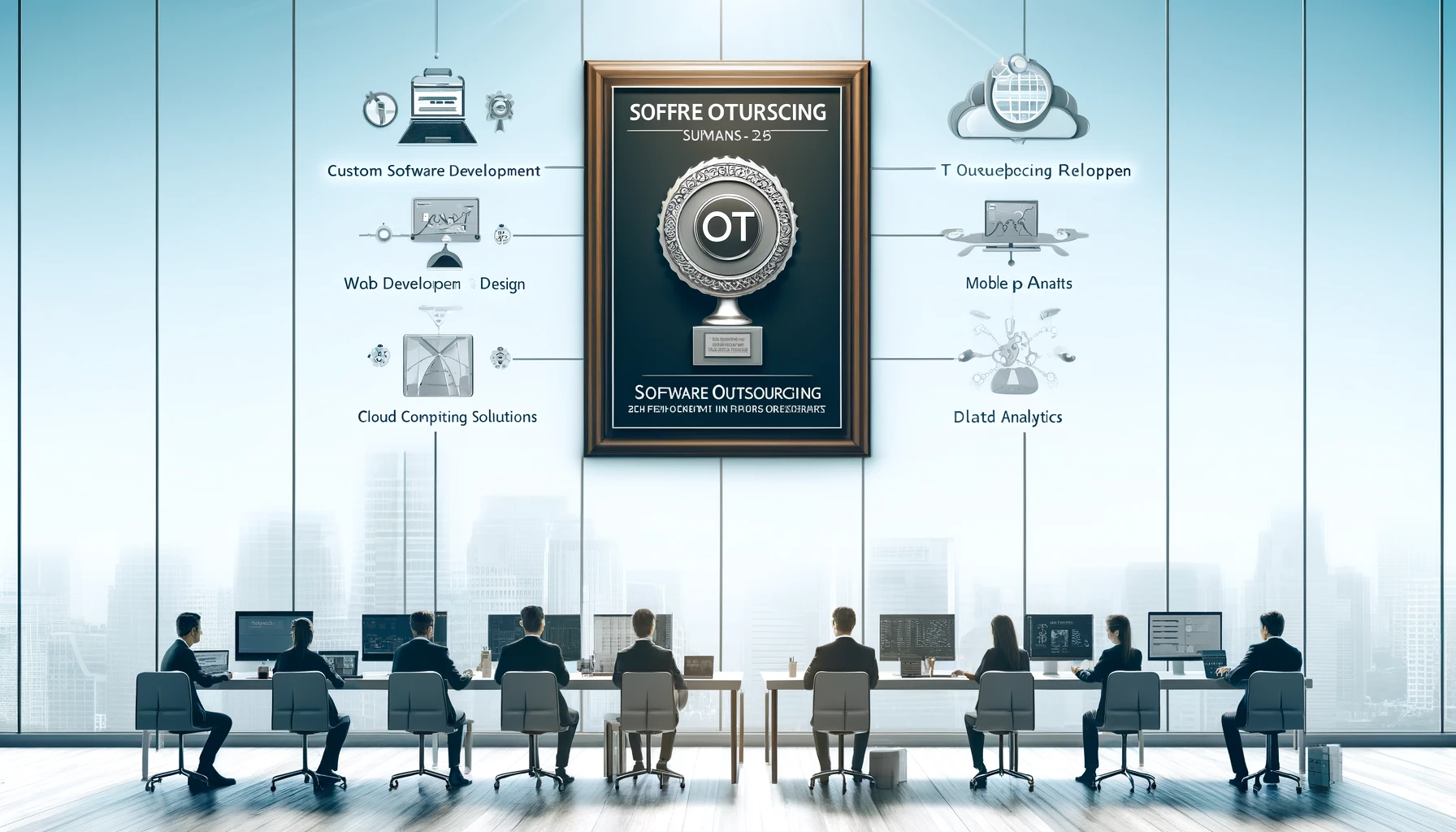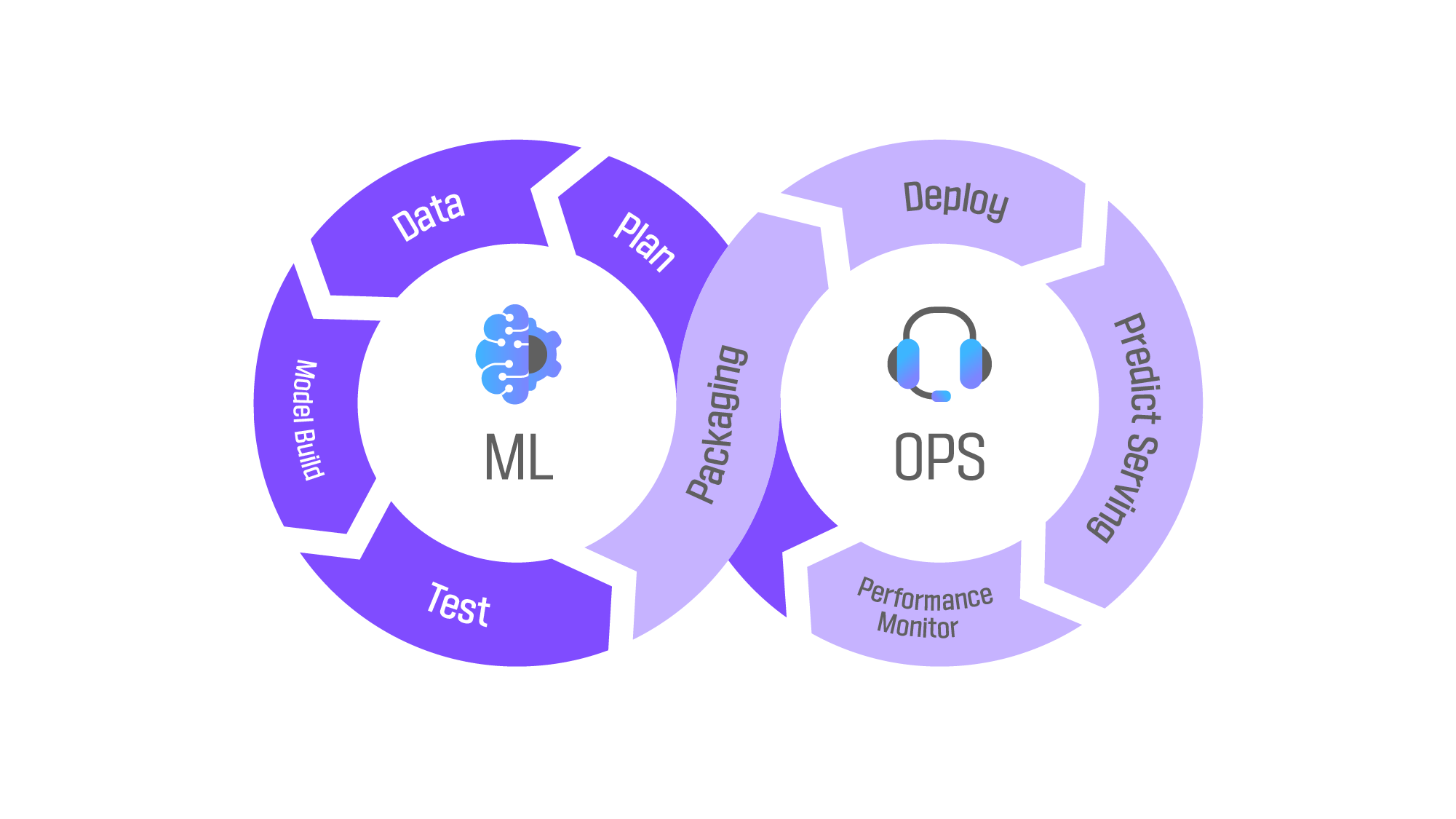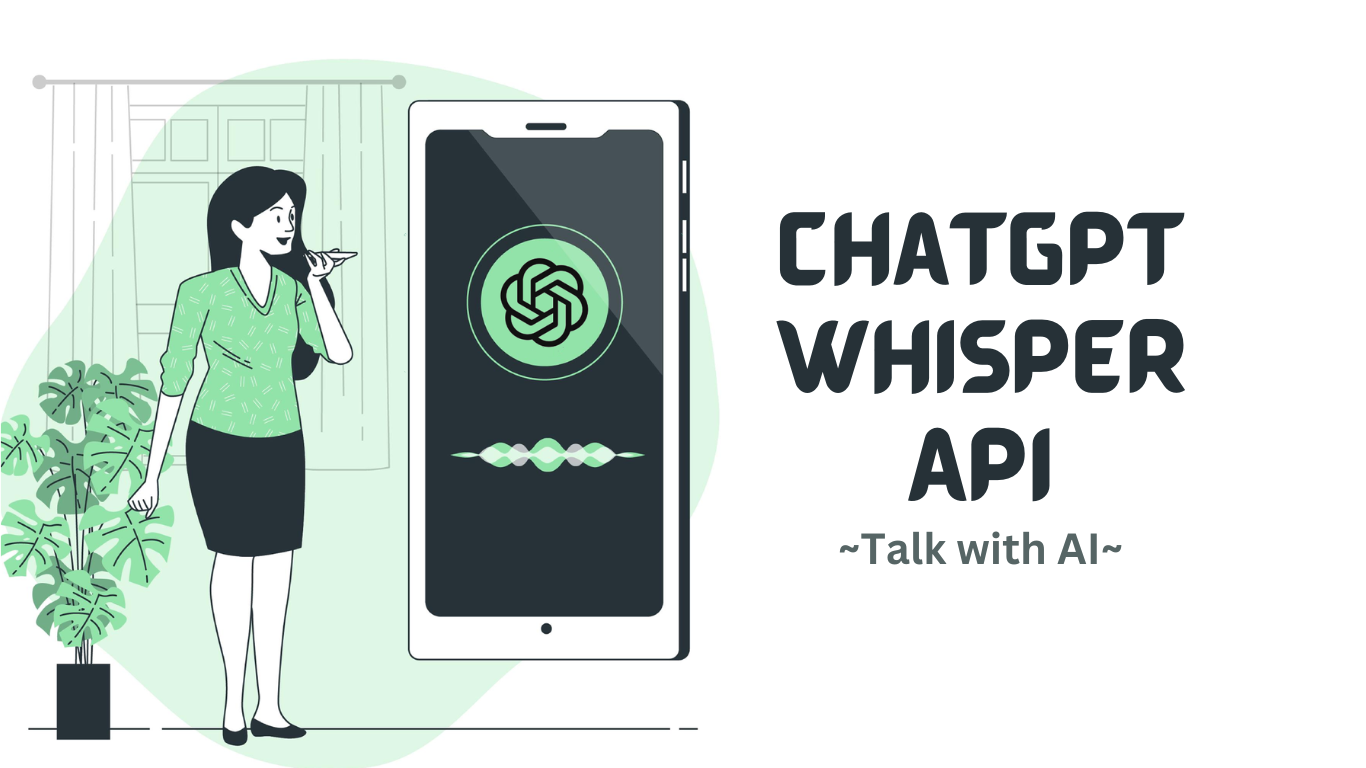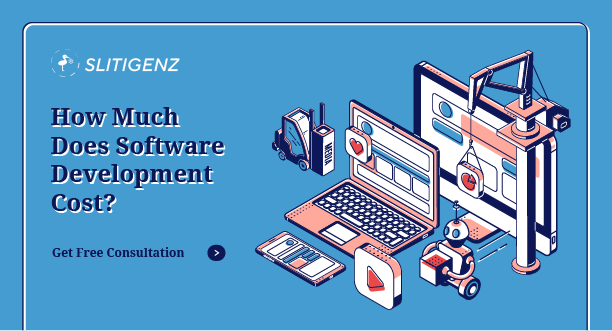Determining the cost of software development is an essential preliminary step prior to embarking on its construction. It is imperative for businesses to ensure profitability, and thus it becomes crucial to ascertain that the expenses associated with developing a software or application are justifiable and reasonable.
Average Cost Of Software Development
When inquiring about the cost of software development from IT firms, it is common to receive the ambiguous response of “it depends.” However, for startup owners, this vague answer proves unhelpful for effective budget planning. Nevertheless, it is possible to establish a solid estimate without engaging in extensive discussions.
Several factors influence the cost of developing software, necessitating a thorough examination of project requirements by the development agency before providing a precise cost estimation. Notably, a straightforward application with minimal user interaction and backend processing will generally incur lower development expenses. Conversely, a complex application involving intricate financial transactions, extensive user engagement, and integration with external systems will typically entail a considerably higher cost.
The cost of software development is not solely dictated by the scale or complexity of the application. For instance, even a seemingly simple application with numerous distinct screens may incur costs comparable to more intricate applications.
Ultimately, the total cost is determined by the number of person-hours invested and the technology stack employed in the development process. Drawing from our experience, the approximate range for software development costs falls between $50,000 and $250,000. The lower end of the spectrum corresponds to the development of a straightforward app requiring fewer than 700 hours of work. On the other hand, if you are constructing a multi-platform app with a server-side application, the cost is likely to reach six figures.
To provide concrete examples, the development of a basic social media app for a single platform may amount to $50,000. However, expanding the same app to include web, Android, and iOS platforms would increase the cost to approximately $137,000, requiring around 2,750 hours of development. For more complex applications like UberEats, one can anticipate costs of approximately $150,000, entailing approximately 3,000 hours of work.
Software Cost Factors
The cost of software development exhibits significant variation across a broad range. While the technical intricacies and characteristics of the application undoubtedly contribute to the determination of development costs, it is important to note that additional non-technical factors can also impact your budgetary considerations.
App Type And Complexity
The choice between developing an Uber-like app or a simpler app without backend processing significantly impacts the overall cost of the development process. Constructing a basic app is relatively straightforward and requires minimal effort to complete. In contrast, developing an app similar to Uber entails the utilization of complex algorithms, a sophisticated technology stack, and intensive backend processing.
Naturally, the cost of building an Uber-like app exceeds that of creating a simple app designed solely to display a business’s latest catalog. As a general guideline, the level of user interaction required corresponds to the expansiveness of the app. An Uber-like app, for instance, incorporates distinct user categories, each with varying rights for profile editing.
Moreover, the complexity of the app necessitates a greater degree of customization. Customization entails the development of new code by software engineers to deliver the required functionalities within the app. Additionally, the custom modules undergo thorough testing, which further contributes to the higher costs associated with such projects.
Platforms
It is highly likely that your target audiences are distributed across different platforms, necessitating the development of distinct versions of your app for web, Android, and iOS. Creating multiple platform-specific versions of an app incurs additional expenses in terms of development fees, as it requires the engagement of separate teams of developers to work on each version.
In certain cases, cost savings in development fees can be achieved by opting for a cross-platform app. Cross-platform apps can be deployed on both iOS and Android using a shared codebase. However, the extent of time saved through cross-platform development relies on the expertise of the development team and may not be applicable to all types of products. For instance, developing financial software with graphs and dashboards, or streaming functionalities, may not yield significant time savings through cross-platform development.
This leaves the option of building native apps for each platform, which tends to be more costly. A native app developed for iOS cannot be directly reused for Android, and vice versa. Some startups choose to focus on a single platform initially, concentrating their efforts on achieving a certain level of success before expanding to other platforms. An exemplary illustration of this approach is Clubhouse, which initially launched as an exclusive app for Apple users.
Complexity Of UX/UI Design
It is a common occurrence for users to disengage from an app after initial usage, often due to poor user interface (UI) or navigation. User experience (UX) plays a pivotal role in fostering user satisfaction and promoting a high retention rate once the app is launched. Consequently, it is unsurprising that startups prioritize the incorporation of custom UX/UI design within their apps.
UX/UI design encompasses the integration of various graphic elements, such as buttons, fonts, icons, and colors, across all interfaces. Additionally, it encompasses the seamless execution of specific tasks by users within the app. Developing visually appealing interfaces and ensuring a satisfactory user experience demands significant efforts from the development team.
These endeavors translate into costs for startup owners, as they are responsible for covering expenses associated with custom artwork, animations, testing, and potential redesigns. These investments are made to ensure that the app is equipped with the most optimal UX features, thereby enhancing its overall usability and appeal.
Back-End Infrastructure And Connected APIs
Apps that deliver substantial value to users rarely operate in isolation. They often rely on connections to external systems and necessitate extensive backend processing. A prime example is Uber, where intricate background processes remain hidden behind a user-friendly client interface.
Features such as geolocation, mapping, and various payment options serve as key attractions for users on ride-hailing platforms. Additionally, developers prioritize the implementation of robust backend measures to ensure the protection of user data. These features require significant investments of time and resources, contributing to the overall development cost of the app.
If the app involves intensive data processing on the server side, the development of corresponding modules becomes more expensive. Moreover, the server-side application may require interactions with external systems. While utilizing off-the-shelf APIs can help mitigate development costs, the creation of a custom data-exchange API would entail additional expenses that must be accounted for.
Geographic Location
The cost of hiring software developers can vary significantly depending on your geographical location. This is particularly evident in regions such as the United States and Western European countries, where developers’ average hourly rates hover around $100. The higher hourly rate directly translates to increased software development costs for your project.
Nevertheless, there are alternative regions where software development can be accomplished at a considerably lower rate without compromising quality. Eastern European countries, in particular, have emerged as popular destinations for IT outsourcing, boasting a substantial pool of skilled and proven developers. Among these countries, Ukraine stands out by offering an affordable hourly rate of $45.
For even more cost savings, countries like China and India offer even lower rates. However, it is important to consider and navigate the cultural differences and time zone disparities when collaborating with developers from these regions. Working with developers who speak the same language and being able to engage in real-time conversations can significantly facilitate the development process.
By making a well-informed decision about the location of your software development team, you have the potential to achieve substantial cost savings without compromising the quality of your app.
Hiring Model
It is important to recognize that the choice of collaboration model can significantly impact the overall development cost. Once you have selected a developer, you are typically presented with three hiring options: fixed-rate, hourly rate, or dedicated team.
The fixed-rate model entails paying a predetermined sum based on clearly defined requirements. While this approach provides clarity regarding the cost for developers, it allows limited room for changes during the development process.
Conversely, the hourly-rate model offers greater flexibility to accommodate evolving requirements. Payment is based on the number of hours worked and the resources utilized during development. However, the total cost may be less predictable, and the client may have limited control over the development team. This model often suits fledgling startups seeking adaptability.
Established startups have found the dedicated team model to be an appealing collaboration approach. In this model, the IT agency assigns developers to the startup, with the latter covering the developers’ salaries during their service. This arrangement provides the startup with exclusive access to the developers, which can result in shorter development times and enhanced collaboration.
Choosing the appropriate collaboration model is crucial in managing development costs and aligning with the specific needs and stage of your startup.
Conclusion
Accurately determining the cost of software development necessitates extensive discussions and considerations between the developer and the client. In addition, it is essential to acknowledge the influence of non-technical factors on the overall cost of app or software development. The key is to have a well-defined vision of the app and engage with the appropriate developer.
Our team is fully prepared to delve into your app concept and provide you with a competitive cost estimate. We encourage you to contact us without delay to initiate the process.

We are delighted to announce that Slitigenz has been recognized as the top IT outsourcing firm by the esteemed SoftwareOutsourcing…

2022 sparked the AI revolution, 2023 saw it infiltrate the business world, and now, in 2024, we’re at the brink…

Hey there! Ever wondered what the buzz around MLOps is all about? Let’s break it down! MLOps, short for Machine…

Whisper represents a cutting-edge neural network model meticulously crafted by OpenAI, designed to adeptly tackle the complexities of speech-to-text conversions.…


2 Comments
Your comment is awaiting moderation.
clomid tablets: can i buy generic clomid – can i get cheap clomid pills
Your comment is awaiting moderation.
paxlovid cost without insurance: buy paxlovid online – paxlovid cost without insurance
Your comment is awaiting moderation.
doxycycline 250 mg tabs: doxycycline 150mg pill – doxycycline 120mg
Your comment is awaiting moderation.
amoxicillin buy online canada: where can i get amoxicillin – amoxicillin azithromycin
Your comment is awaiting moderation.
how to get cheap clomid prices: where buy generic clomid prices – cost clomid price
Your comment is awaiting moderation.
https://paxloviddelivery.pro/# paxlovid pharmacy
cost of amoxicillin amoxicillin online purchase buy amoxicillin online without prescription
Your comment is awaiting moderation.
amoxicillin where to get: amoxicillin script – amoxicillin 250 mg
http://paxloviddelivery.pro/# paxlovid buy
Your comment is awaiting moderation.
This is a topic that is near to my heart… Cheers! Where can I find the contact details for questions?
Your comment is awaiting moderation.
amoxicillin 500: amoxicillin buy online canada – buy amoxicillin online no prescription
https://amoxildelivery.pro/# amoxicillin 500 mg without a prescription
Your comment is awaiting moderation.
http://paxloviddelivery.pro/# paxlovid pharmacy
antibiotics cipro buy cipro online without prescription buy ciprofloxacin over the counter
Your comment is awaiting moderation.
ciprofloxacin order online: ciprofloxacin generic price – buy generic ciprofloxacin
Your comment is awaiting moderation.
I could not refrain from commenting. Perfectly written.
Your comment is awaiting moderation.
how to get cheap clomid pills: can you get clomid without dr prescription – generic clomid for sale
http://paxloviddelivery.pro/# Paxlovid buy online
Your comment is awaiting moderation.
https://doxycyclinedelivery.pro/# buy 40 mg doxycycline
antibiotics cipro cipro ciprofloxacin over the counter
Your comment is awaiting moderation.
paxlovid pharmacy: paxlovid buy – paxlovid covid
http://clomiddelivery.pro/# can i buy clomid for sale
buy doxycycline uk how to buy doxycycline without a prescription doxycycline for sale
Your comment is awaiting moderation.
paxlovid pharmacy: paxlovid price – paxlovid for sale
Your comment is awaiting moderation.
doxycycline 100mg tablet: doxycycline generic – doxycycline 10mg price
https://ciprodelivery.pro/# cipro
Your comment is awaiting moderation.
http://ciprodelivery.pro/# ciprofloxacin generic price
can you buy generic clomid without prescription cost clomid without rx can i get generic clomid without a prescription
Your comment is awaiting moderation.
cost of amoxicillin prescription: where to buy amoxicillin 500mg without prescription – amoxicillin 500 capsule
http://paxloviddelivery.pro/# paxlovid price
how to buy cheap clomid online how to get clomid without prescription order clomid without rx
Your comment is awaiting moderation.
paxlovid price: paxlovid india – paxlovid pharmacy
http://amoxildelivery.pro/# amoxicillin 500mg prescription
Your comment is awaiting moderation.
https://amoxildelivery.pro/# amoxicillin 750 mg price
how can i get clomid clomid sale can i purchase generic clomid pills
Your comment is awaiting moderation.
doxycycline buy canada 100mg: can i buy doxycycline online – doxycycline 100 mg order online
Your comment is awaiting moderation.
Everything is very open with a really clear explanation of the issues. It was truly informative. Your site is very helpful. Thank you for sharing!
Your comment is awaiting moderation.
I have to thank you for the efforts you have put in writing this site. I really hope to see the same high-grade blog posts from you in the future as well. In truth, your creative writing abilities has motivated me to get my very own website now 😉
Your comment is awaiting moderation.
Way cool! Some very valid points! I appreciate you writing this article and the rest of the website is also really good.
Your comment is awaiting moderation.
There’s definately a great deal to learn about this topic. I like all of the points you made.
Your comment is awaiting moderation.
buy cipro cheap: ciprofloxacin over the counter – ciprofloxacin 500mg buy online
http://amoxildelivery.pro/# amoxicillin medicine
doxycycline 250 mg can i buy doxycycline online doxycyline
Your comment is awaiting moderation.
An impressive share! I have just forwarded this onto a coworker who has been doing a little homework on this. And he in fact bought me lunch simply because I found it for him… lol. So let me reword this…. Thanks for the meal!! But yeah, thanx for spending some time to discuss this subject here on your website.
Your comment is awaiting moderation.
cipro online no prescription in the usa: buy cipro – ciprofloxacin generic
http://paxloviddelivery.pro/# paxlovid buy
Your comment is awaiting moderation.
https://doxycyclinedelivery.pro/# cost doxycycline tablets
where to get generic clomid without prescription where can i buy cheap clomid without a prescription where can i buy cheap clomid without prescription
Your comment is awaiting moderation.
purchase amoxicillin online: amoxicillin 200 mg tablet – can you buy amoxicillin over the counter canada
https://ciprodelivery.pro/# п»їcipro generic
buy cipro online ciprofloxacin over the counter ciprofloxacin over the counter
Your comment is awaiting moderation.
buy cipro no rx: antibiotics cipro – buy cipro
Your comment is awaiting moderation.
Having read this I believed it was very informative. I appreciate you finding the time and effort to put this informative article together. I once again find myself personally spending a significant amount of time both reading and leaving comments. But so what, it was still worthwhile.
Your comment is awaiting moderation.
http://paxloviddelivery.pro/# Paxlovid over the counter
paxlovid generic paxlovid cost without insurance paxlovid for sale
Your comment is awaiting moderation.
amoxicillin online purchase: amoxicillin buy no prescription – amoxicillin from canada
http://paxloviddelivery.pro/# paxlovid buy
Your comment is awaiting moderation.
paxlovid pharmacy: paxlovid cost without insurance – paxlovid generic
https://amoxildelivery.pro/# where to buy amoxicillin pharmacy
doxycycline 100mg cost doxycycline 20 mg coupon doxycycline for dogs
Your comment is awaiting moderation.
п»їcipro generic: ciprofloxacin generic price – cipro pharmacy
Your comment is awaiting moderation.
top online pharmacy india: indian pharmacy – buy medicines online in india
http://foruspharma.com/# buying prescription drugs in mexico
canadian mail order pharmacy canadian pharmacy meds review canadian pharmacy price checker
Your comment is awaiting moderation.
http://indiapharmast.com/# buy prescription drugs from india
Your comment is awaiting moderation.
best online canadian pharmacy: canadian valley pharmacy – canadian king pharmacy
Your comment is awaiting moderation.
Way cool! Some very valid points! I appreciate you writing this post plus the rest of the site is extremely good.
Your comment is awaiting moderation.
Online medicine order: reputable indian pharmacies – indian pharmacy paypal
http://foruspharma.com/# mexico pharmacy
purple pharmacy mexico price list pharmacies in mexico that ship to usa medicine in mexico pharmacies
Your comment is awaiting moderation.
global pharmacy canada rate canadian pharmacies canada drugstore pharmacy rx
Your comment is awaiting moderation.
online canadian pharmacy: vipps canadian pharmacy – buying from canadian pharmacies
Your comment is awaiting moderation.
http://foruspharma.com/# buying prescription drugs in mexico
Your comment is awaiting moderation.
buying prescription drugs in mexico mexican online pharmacies prescription drugs mexican pharmaceuticals online
Your comment is awaiting moderation.
indian pharmacies safe: reputable indian pharmacies – world pharmacy india
Your comment is awaiting moderation.
https://foruspharma.com/# mexico drug stores pharmacies
Your comment is awaiting moderation.
best online pharmacies in mexico mexico drug stores pharmacies best online pharmacies in mexico
Your comment is awaiting moderation.
indian pharmacy online: india pharmacy – indian pharmacy online
Your comment is awaiting moderation.
canadian pharmacies compare: canadianpharmacymeds com – canadian online drugs
https://canadapharmast.online/# canadian pharmacy store
reputable mexican pharmacies online mexican pharmaceuticals online mexican pharmaceuticals online
Your comment is awaiting moderation.
reputable indian online pharmacy indian pharmacy п»їlegitimate online pharmacies india
Your comment is awaiting moderation.
http://indiapharmast.com/# top 10 online pharmacy in india
Your comment is awaiting moderation.
medication from mexico pharmacy: mexican pharmacy online – mexico drug stores pharmacies
Your comment is awaiting moderation.
best online pharmacies in mexico
http://cmqpharma.com/# medication from mexico pharmacy
mexican pharmaceuticals online
Your comment is awaiting moderation.
Very interesting information!Perfect just what I was looking for!!
Your comment is awaiting moderation.
Good article and straight to the point. I am not sure if this
is in fact the best place to ask but do you folks have any thoughts on where to
get some professional writers? Thanks 🙂 Lista escape roomów
Your comment is awaiting moderation.
mexico drug stores pharmacies
http://cmqpharma.com/# purple pharmacy mexico price list
medication from mexico pharmacy
Your comment is awaiting moderation.
buying prescription drugs in mexico: mexican pharmacy online – buying prescription drugs in mexico online
Your comment is awaiting moderation.
Полностью трендовые события мира fashion.
Абсолютно все эвенты самых влиятельных подуимов.
Модные дома, лейблы, высокая мода.
Самое лучшее место для стильныех людей.
https://worldsfashion.ru/
Your comment is awaiting moderation.
Абсолютно стильные новости модного мира.
Все эвенты мировых подуимов.
Модные дома, лейблы, высокая мода.
Самое приятное место для стильныех людей.
https://fashionsecret.ru
Your comment is awaiting moderation.
Абсолютно свежие новинки индустрии.
Важные события всемирных подуимов.
Модные дома, бренды, haute couture.
Свежее место для модных людей.
https://sofiamoda.ru
Your comment is awaiting moderation.
Очень свежие новости модного мира.
Актуальные эвенты мировых подуимов.
Модные дома, торговые марки, гедонизм.
Приятное место для модных людей.
https://urban-moda.ru/
Your comment is awaiting moderation.
Очень важные новинки модного мира.
Абсолютно все новости лучших подуимов.
Модные дома, бренды, гедонизм.
Самое приятное место для трендовых людей.
https://miramoda.ru
Real superb info can be found on web site. “We should be eternally vigilant against attempts to check the expression of opinions that we loathe.” by Oliver Wendell Holmes.
Thanks for paying attention to our blog. Our consultation is free so you can leave your questions here and we will try to answer them asap.